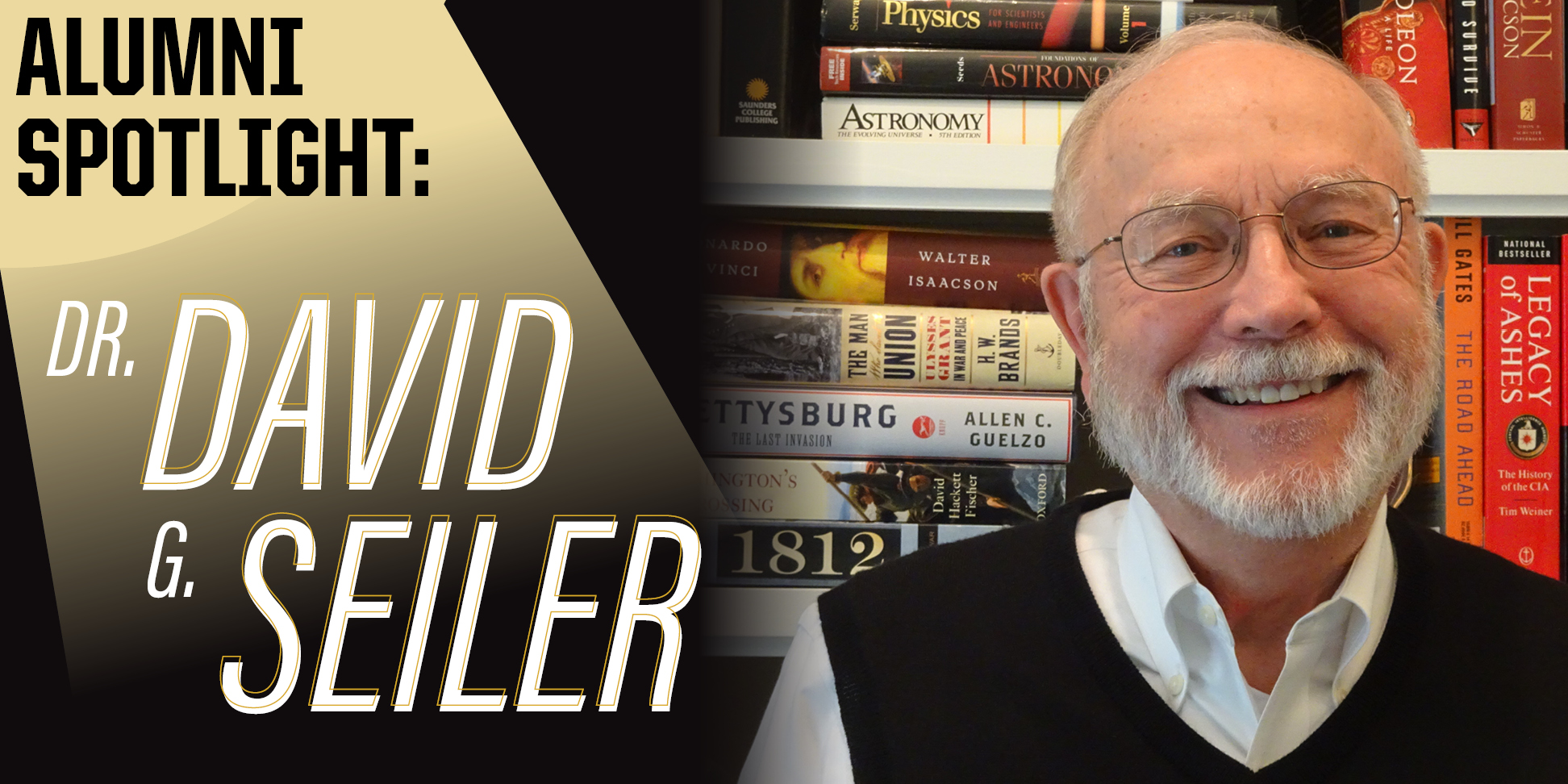Purdue Physics and Astronomy Spotlight Series
2021-08-10
A twisting and turning change of careers allowed Purdue Physics alumnus to constantly reach and expand the science of semiconductors
It was one of those hot and sticky summer days in the early 1960s, when the Heathkit Transistor Stereo Amplifier box arrived on the doorstep of Dr. David G. Seiler’s childhood home in Green Bay, Wisconsin. After a couple of months of assembling the electronic components including the transistors into this new solid state device, Seiler had both a brand new stereo amplifier and an intense desire to learn more about the semiconductors that were in the transistors. Little did he know then, but this was the beginning of an eventful career focused on this new technology.
When Seiler enrolled in Purdue University’s Physics Department and took a position as a teaching assistant in 1963, he had no idea the fantastic twists and turns his career and life would take. He recently graduated as an undergraduate from Case Institute of Technology in Cleveland, OH, which at the time, was still an all-male technical college. He attended on a Tuition Scholarship he earned while a student at West High in Green Bay Wisconsin. He was always interested in math, chemistry, and physics. While at Case, he published his first ever paper in 1963 called “Vacuum Evaporated Thin Films.” He majored in physics and minored in math. This passion for the sciences came with him to Purdue.
“I chose Purdue because I was interested in concentrating on a semiconductor program,” says Seiler. “Purdue was well known for their work in semiconductors in those days. I received an M.S. in Physics from Purdue in 1965 and a Ph.D. in Physics in 1969. My major professor was Dr. William M. Becker (Marty). My Thesis was titled ‘Investigation of the Band Structure of Gallium Antimonide Using the Shubnikov-de Hass Effect.’”
Seiler’s education at Purdue set him up for a rewarding career in science, including positions in education and government, as well as collaborating with the semiconductor industry. He spent the latter part of his career at the National Institute of Standards and Technology in Gaithersburg, MD holding high level management positions for the Physical Measurements Laboratory, the Engineering Physics Division, and Semiconductor Electronics Division. Before this, his career took him to the National Science Foundation (NSF) in Washington, D.C. as a program director and the University of North Texas and Massachusetts Institute of Technology (MIT). His time at Purdue taught him lessons that he used throughout his illustrious career.
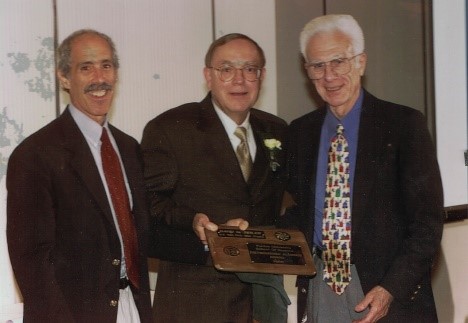
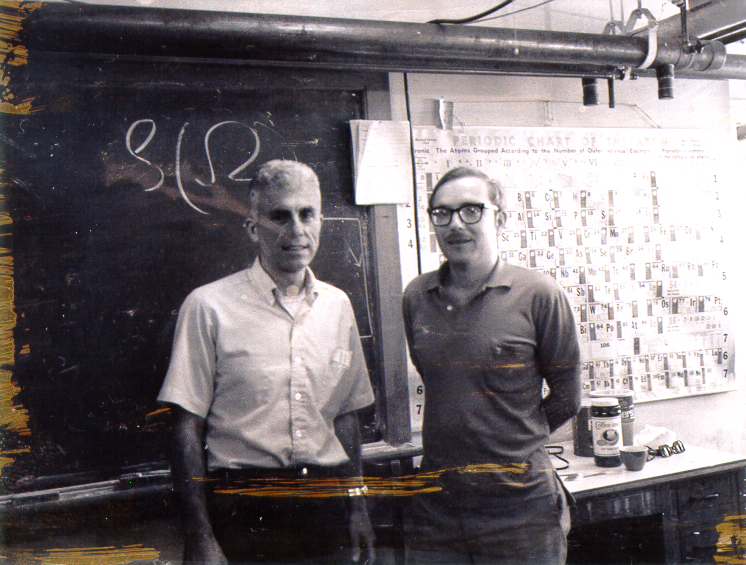
“A good physicist needs to be flexible as they do their research,” says Seiler. “It took me 6 months to design a uniaxial stress apparatus to study semiconductors at low temperature. While the Physics machine shop was building it, I discovered a new method to study the oscillatory magnetoresistance in compound semiconductors using magnetic field modulation and lock-in amplifier techniques. This sensitive technique enabled me to discover totally new phenomena for the first time, as well as the opportunity to interpret and understand the data with theoretical models based upon the new physics uncovered for GaSb, my thesis material. Subsequently, Professor Ron Sladek asked me to interpret his de Haas van Alphen data in InSb that he had taken while on a sabbatical at North American Rockwell Corporation in California. I showed him how my theoretical model developed for GaSb also fit his data and we published a Physical Review paper together. Marty Becker also had a visiting scientist at Purdue, Robert Galazka, with him from the Institute of Physics, Polish Academy of Science, Warsaw, Poland. Robert’s specialty was growing crystals of HgSe and HgTe, II-VI semiconductors. Robert used my experimental method to take new oscillatory magnetoresistance data in HgSe and we were able to interpret and understand his data with the theoretical models I had developed. Thus, unforeseen opportunities can arise which one should take advantage of.”
Purdue has changed quite a bit since Seiler was a student. In fact, his experimental Ph.D. research was conducted in the FWA 5 Quonset Hut. This building no longer exists at Purdue but locations of the FWAs can be found on the Purdue Libraries Facilities and Buildings Database. The FWA 5 building was built as part of the Federal Works Administration (FWA) project where pre-engineered buildings were brought to Purdue. These FWA buildings were left over from World War II and were remodeled to be used as physics laboratories for the growing student body.
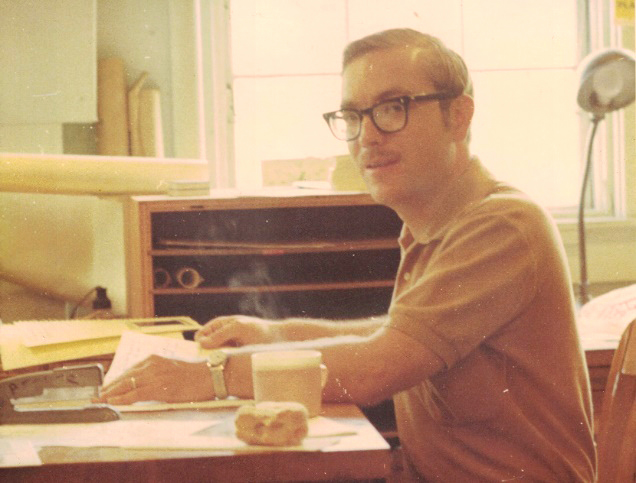
“My mother regularly took my sister and I to the Green Bay Public Library,” says Seiler. “One day she also took us to the Neville Public museum adjacent to the Library to see a special exhibit on the life and inventions of Leonardo da Vinci. I remember being fascinated and inspired by what I saw and learned about his detailed sketches of his many inventions that he had envisioned long before the technology to build them actually existed. I think from that point so early in my life I developed a love for science and math going back to the seventh grade. I entered my freshman year of college thinking of majoring in math, chemistry or physics. In my first semester at Case, I had the good fortune to be taught in my first physics class by a full professor who made the class interesting, fun, and challenging. These three characteristics would guide me for the rest of my life as I chose what to do for all my career opportunities.”
When asked about advice he might give to current Boilermakers studying physics, he said, “Purdue gave me a chance to grow intellectually and professionally, while being nurtured as a person. Purdue has a great reputation among the scientific community and this can unlock job opportunities for you.”
Because Seiler has daughters, he learned that opportunities for women in the scientific field needed to be expanded. For this reason, he started the David G. Seiler Physics Scholarship which has a preference for supporting undergraduate women in physics. Through his philanthropy, scholarships, talks, and involvement with the university, he advocates for women in science because he saw first-hand how a closed door could stifle education.
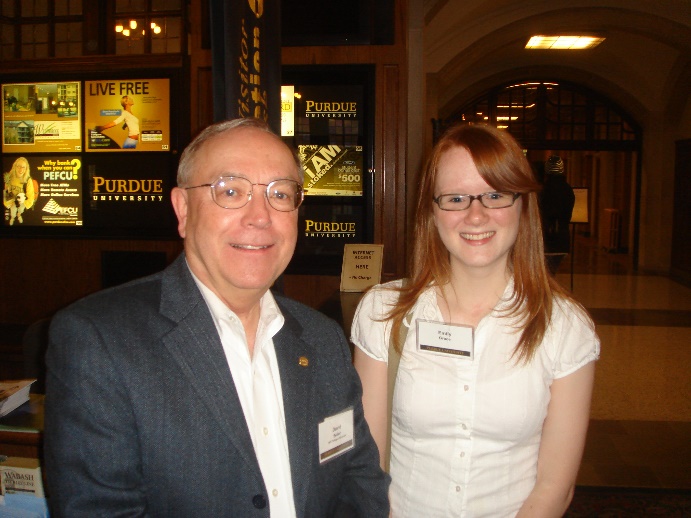
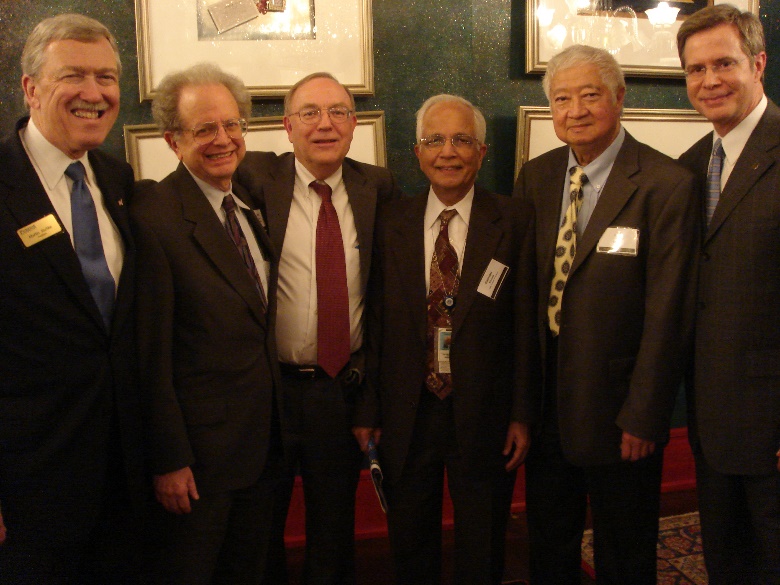
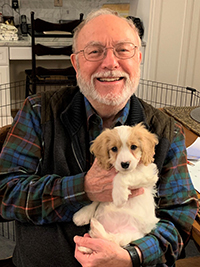 Now retired, Seiler is pursuing his interests: hiking, collecting rock specimens, digging into his Austrian and Swedish genealogy, and raising his new Cavachon puppy with Linda. The puppy is enriching both their lives with meaning and fun during this difficult pandemic year.
Now retired, Seiler is pursuing his interests: hiking, collecting rock specimens, digging into his Austrian and Swedish genealogy, and raising his new Cavachon puppy with Linda. The puppy is enriching both their lives with meaning and fun during this difficult pandemic year.
Career Highlights:
- GOES I Weather Satellite Detector Degradation Investigation and Research
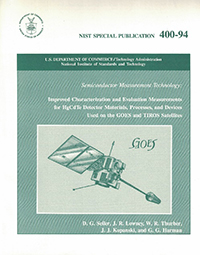 In 1990, the National Oceanic and Atmospheric Administration (NOAA) had requested NIST to investigate the reliability of certain mercury-cadmium-telluride (HgCdTe) infrared detectors. Because Seiler had extensive experience with these materials, he was asked to also serve on a task force to help solve the issues. In September 1991, NIST issued their reliability report concluding that NIST could not recommend the use of the detectors in a GOES I satellite. NIST also performed further research funded by NOAA to find ways to improve characterization and evaluation measurements of HgCdTe infrared detector materials, processes and devices used for the Geostationary Operational Environmental Satellite (GOES) and the Television and Infrared Operational Satellite (TIROS) systems. The results of the two NIST studies that were led by Seiler for the GOES and TIROS satellites were detailed in NISTIR 4687 and in NIST Special Publication 400-94 [PDF].
In 1990, the National Oceanic and Atmospheric Administration (NOAA) had requested NIST to investigate the reliability of certain mercury-cadmium-telluride (HgCdTe) infrared detectors. Because Seiler had extensive experience with these materials, he was asked to also serve on a task force to help solve the issues. In September 1991, NIST issued their reliability report concluding that NIST could not recommend the use of the detectors in a GOES I satellite. NIST also performed further research funded by NOAA to find ways to improve characterization and evaluation measurements of HgCdTe infrared detector materials, processes and devices used for the Geostationary Operational Environmental Satellite (GOES) and the Television and Infrared Operational Satellite (TIROS) systems. The results of the two NIST studies that were led by Seiler for the GOES and TIROS satellites were detailed in NISTIR 4687 and in NIST Special Publication 400-94 [PDF].
“Interestingly, one innovative measurement technique we applied to uniquely evaluate the detectors used the Shubnikov de-Hass (SdH) effect (oscillatory magnetoresistance) at low temperatures to understand the passivation layers that controlled the responsivity and reliability of the detector response,” says Seiler. “Surprisingly I had used the SdH effect as a major experimental tool in my Ph.D. research to understand certain properties of the semiconductor GaSb. So who knows, what you are studying and learning for your thesis might become important again in the future even 30 years later as was this case.”
- International Conference on the Frontiers of Characterization and Metrology for Nanoelectronics (FCMN)
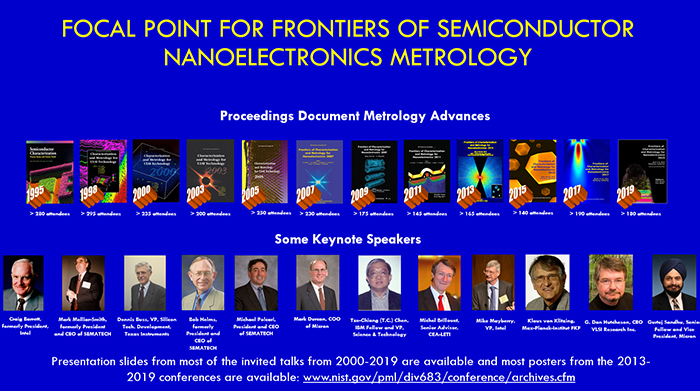 In 1995, Seiler initiated this unique conference series devoted solely to metrology and characterization advances for the semiconductor electronics industry. The vast majority of the 2500 attendees over the past two decades have been from industry. There have been 12 FCMN conferences, with the latest held in April, 2019 in Silicon Valley, California.
In 1995, Seiler initiated this unique conference series devoted solely to metrology and characterization advances for the semiconductor electronics industry. The vast majority of the 2500 attendees over the past two decades have been from industry. There have been 12 FCMN conferences, with the latest held in April, 2019 in Silicon Valley, California.
The hard-bound proceedings of which Seiler was the lead editor have been published by the American Institute of Physics. The published proceedings provide “a practical, up-to-date summary of the state of art in semiconductor measurement science and metrology for use by researchers and in industrial applications,” according to an NRC panel report. Presentations and talks from the 2000-2019 proceedings volumes are available to view on-line free of charge.
- Metrology and Diagnostic Techniques for Nanoelectronics Book Published in 2017
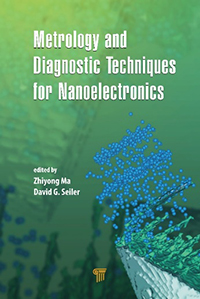 Seiler and Zhiyong Ma, a VP from Intel, published a comprehensive book with 25 chapters (six of them had NIST authors) that covers up-to-date advances in research and industry practices in nanometrology, critical for technology scaling and innovation. It holistically approaches the subject matter and addresses emerging and important topics in semiconductor R&D and manufacturing. It is a complete guide for metrology and diagnostic techniques essential for process technology, electronics packaging, product development, and failure analysis.
Seiler and Zhiyong Ma, a VP from Intel, published a comprehensive book with 25 chapters (six of them had NIST authors) that covers up-to-date advances in research and industry practices in nanometrology, critical for technology scaling and innovation. It holistically approaches the subject matter and addresses emerging and important topics in semiconductor R&D and manufacturing. It is a complete guide for metrology and diagnostic techniques essential for process technology, electronics packaging, product development, and failure analysis.
Photos provided by Dr. David G. Seiler.
Written by Cheryl Pierce.
